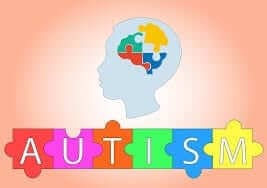
Metabolic screening for early detection of autism
A really interesting article that was published in the “Autism research” journal, examining whether autism can be detected by a blood test.
Introduction: the average age for diagnosis of autism in the United States is around 4 years. The diagnosis is usually based on a combination of typical behavioral findings. However, there is clear evidence that early diagnosis of autistic spectrum disorder (ASD), will result in an improved long term behavioral and social outcomes.
Since the prevalence of autism is 1-2% of the population, there is a great significance to find a screening method that would help in early detection of those children. Parent’s questionnaire, doctors’ questionnaires and a lot of other methods – are underdiagnosing.
The scientific community is trying to find biological markers, that can help in early detection of autism. One of the more advanced methods in tracking biological markers is suggesting that there are different metabolic processes that can be detected in the blood or urine of these children. This method is called Metobotyping.
This project is the largest one ever done, in detecting metabolites in this context.
Methods: children aged 18 months to 4 years from 8 different hospitals in the USA were screened in this study. These were children with diagnosis of ASD or children with normal development, as a control group. The children went through medical and neurological assessment, and provided blood sample.
The study screened for 39 metabolites, related to amino acids or energy cycles in the body. The study included two main steps:
1) First set of testing on about half of the children (from both groups) – finding different metabolites in children with ASD.
2) Validating the results – checking to see if the metabolites found in the first round of tests were found in children with ASD from the second group.
Results: at the end of the day, 499 children with ASD and 208 children with normal development were recruited to this study.
In the first part of locating metabolites while comparing children with ASD to children with normal development – 34 different metabolites were found in the ASD group, with 6 sub-groups.
The second part, which examined whether the metabolites found can trace children with autism showed – 53% sensitivity (this practically means that one child out of two is not diagnosed correctly, or in other words – a negative result does not rule out the diagnosis), but 91% specificity (those who are positive is at a high risk for having autism).
Discussion: this is just a preliminary study, but the results are mind blowing. Why is that?
Logic says that ASD is a spectrum of different heterogenic medical conditions, and not a single organic condition. Therefore, all screening methods examined so far, will fail when trying to analyze a large group of children. On the other hand, a metabolic screening, that may also divide children with ASD to different sub-groups, is potentially promising.
It is true that sensitivity of 50% is basically a coin toss, but high specificity indicates that if a child is positive, there is room for a more comprehensive testing (since there is a 91% chance of him having autism). At this time, this may be a test which needs to be saved for high risk children, or with strong clinical suspicion.
In addition, recognizing the different biochemical processes in each group of children (ASD versus normal development), has great potential in understanding autism better. Is some of the cases is in fact a metabolic disease? And if so – can it be cured like other metabolic diseases?
This is just a preliminary study. There are still a lot of open questions, but this study opens a window to a whole new world of research.
Remember that what we read in scientific journals today (ones which are basic science), has great potential to be part of our life in 5 years’ time. Imagine a blood (or urine), test preformed at the age of one, to detect autism. Imagine how early detection can improve outcomes in these families? Just imagine.
For comments and questions, please register
